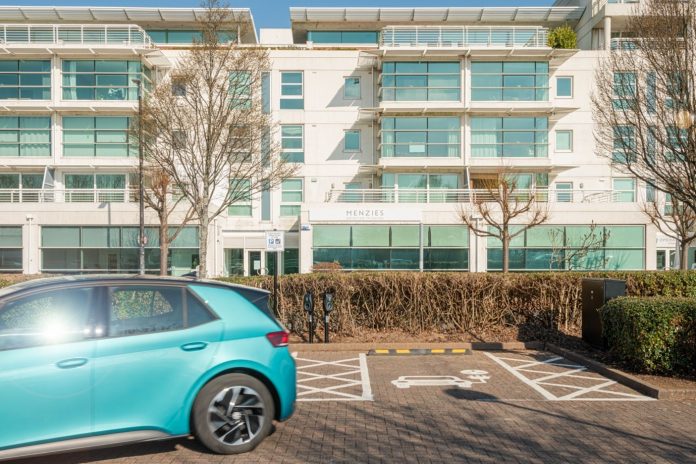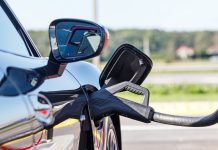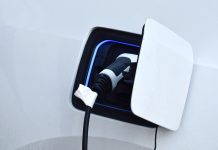The EV transition is gathering pace; however, there is plenty of work to do for everyone ahead of 2035, both structurally and socially says Connected Kerb CEO Chris Pateman-Jones
With local governments, councils, chargepoint operators, housing developers and businesses still needing to do more to be EV ready, Connected Kerb is working with all of these stakeholders to accelerate the UK’s EV transition.
Winning the hearts and minds of communities is one of the big challenges of our time. Not just because it requires a major shift in attitudes and habits resulting from decades of using petrol and diesel vehicles but because it affects such a huge cross-section of society.
That’s why Connected Kerb, rated the best fast-charging company by Zap Map, is working hard to make sure nobody lives more than five minute’s walk from a charger.
Inclusive, reliable and convenient charging for all
Avoiding a two-tier adoption of EV remains a key aim for Connected Kerb. Aiming to debunk the theory that EV charging only works in wealthy, leafy areas, it undertook the UK’s first trial of public smart charging through its Agile Streets project.
This allowed drivers to schedule a charge when charging is cheapest such as overnight or when there is a surplus of renewable energy. We hope to roll out the technology to the rest of our network later in the year to give drivers access to cheaper tariffs that are often only available to people charging privately.
Driving community initiatives
As for taxpayer value, Connected Kerb offers fully funded commercial models to councils that won’t need to pay a penny. One example of this is a project to install thousands of chargers across West Sussex to support drivers with no access to off-street parking.
This is a real community initiative bringing together residents and landowners with charging infrastructure deployed on community facilities such as village halls and library car parks.
Connected Kerb aims to connect people to places, councils to communities and businesses to a brighter future. And not just in major cities. Countryside charging can present an array of issues such as lower footfall, maintenance issues and stretched grid capacity, all resulting in charging ‘blackspots’.
Spreading the EV transition: 30% of the national charging network focused on London
We’ve worked with Kent County Council and a number of district and parish councils to improve access to charging in large swathes of rural areas.
Until recently, 30% of the national charging network was focused in London. That’s a statistic that Connected Kerb is committed to changing, particularly paying attention to the North as well as Scotland and Wales. We’ve installed in Warrington, Northumberland, Sunderland and Bollington with other deployments on the way. Location is everything. Having the right numbers of chargers is important, but more so is putting them in the right place.
That’s why Connected Kerb uses a combination of resident requests and our site selection tool, powered by artificial intelligence, to select the best location for chargers, part of our data-driven approach. EV ownership levels, existing street furniture, local parking restrictions and socio-economic factors are all part of the company’s data-driven approach to getting chargers in the ground.
Meeting the accessibility challenge: 2.3 million drivers with accessibility requirements in the UK
Another area where Connected Kerb is pushing hard to make sure that nobody gets left behind in the transition to electric vehicles is accessibility.
There are over 2.3 million drivers with accessibility requirements in the UK. Common problems for EV drivers with physical and/or cognitive impairments include heavy cables, obstructive bollards and narrow parking bays where a driver needs not just to get out of their vehicle but to access the charging point, often from a seated position.
Screens can also impede the charging experience for users with visual impairments, whether it be from sun reflection of the use of text colour while charging points that require apps can present accessibility issues.
Just recently, Connected Kerb launched a project in Cardiff for the installation of over 500 charging sockets, deployed at over 200 sites on streets and car parks across the Cardiff Capital Region. Of these, over 300 will be widened bays to improve access for electric vehicle users who use wheelchairs.
While implementing wider bays is theoretically straightforward, it presents several practical challenges and extra costs. Wider bays mean fewer spaces within an area of a given size which can also reduce the site owner’s parking income. But it is essential that these challenges do not become excuses, and it is incumbent on the EV industry to address them.
A new standard was introduced in October 2022 by the British Standards Institute, called PAS 1899:2022, which covers charging point accessibility. This aims to support the building of inclusive EV charging infrastructure in the UK.
A new standard was introduced in October 2022 by the British Standards Institute, called PAS 1899:2022, which covers charging point accessibility. This aims to support the building of inclusive EV charging infrastructure in the UK.
It is not mandatory, but it is a standard that Connected Kerb has started to work on in earnest to try and meet. But we acknowledge there is a long way to go before full compliance can be declared. That applies to the whole EV industry.
Innovative charging solutions pushing the EV transition
Connected Kerb is winning tenders with a solution that puts sustainability at the core. Made predominantly from recycled materials, the Geckos installed at locations such as Havannah Street Car Park (pictured) in Cardiff are discreet, blending into the surrounding environment.
The sleek Chameleon, our newest bollard-style charging point, can also be seen across Coventry, the spiritual home of transport.
Connected Kerb solutions have a modular design. The expensive componentry sits underground, meaning multiple charging points can be installed while the above-the- ground socket is added when required, such as when EV demand rises.
“That’s why Connected Kerb, rated the best fast-charging company by Zap Map, is working hard to make sure nobody lives more than five minute’s walk from a charger.”
This means provision can be aligned with demand and there is no need to excavate the ground multiple times. Maintenance and upgrade work also becomes much easier and less disruptive for the local community.
Our chargers are also future-proofed, able to support future technologies such as 5G, IoT and air quality sensors. In short, our chargers will not become obsolete in ten years’ time and their durable design means they will last much longer than most on the market.
Providing EV charging that is high value, low impact and accessible to everyone, Connected Kerb believes it can change the world for good, one charge at a time.
For more information, please contact info@connectedkerb.com.
Contributor Details
More About Stakeholder
-
Connected Kerb – electric vehicle (EV) charging infrastructure solutions
Connected Kerb provide charging infrastructure solutions for electric vehicles, making a sustainable future achievable.
Editor's Recommended Articles
-
Must Read >> Electrifying the NHS can lead the charge to net zero
















